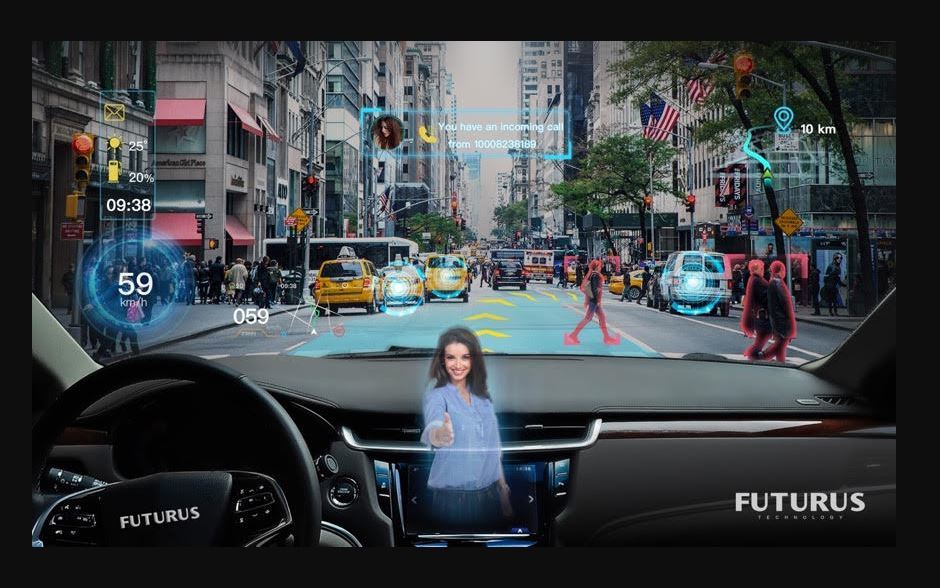| a short introduction to the research topic
Drivers of new cars nowadays are served by several different assistance systems, presenting information about the car and the environment. With the evolution of digital interfaces, the cars GUIs improved in quality, size and customizability.
Besides displays on the dashboard and center console, the Head Up Displays (HUD) were developed with growing importance due to their optimal positioning directly in the driver’s line of sight. Displaying information on the windshield is the perfect condition for using Augmented Reality in vehicles. By this technology a completely new user experience is enabled without any need for clumsy AR-glasses. There are already some expanded systems in new, high-end cars on the market, and newest demos of suppliers like Continental and Panasonic indicate a fast spread of augmented reality technologies for vehicles in the future.
With further evolution of connected cars and smart cities, there will be countless of inputs and data to be shown besides of driver navigation. Until the cars are not completely autonomous, the collected big data will be more and more used to help the driver on his way. On one hand, probably some implementations like HUDs will become mandatory equipment, because of their safety benefits. On the other hand, the data and information has to be selected and designed precisely, not to overwhelm, confuse and distract the driver in any way.
In my research I want to examine the current and possible future trends of AR solutions for in-car user interfaces and the involved challenges that have to be overcome. Some examples of questions I want to get answers to are:
- What in-car AR solutions are already on the market and in development?
- What are the possible digital information groups that can truly help drivers behind the steering wheel?
- In which ways can AR be implemented to deliver helpful information to the driver?
- What are the boundaries of the human perception and which psychological aspects have to be considered to design a safety critical in-car AR interface?

Inspirations:
Forbes: Are You Ready for Augmented Reality in your Car?
https://www.forbes.com/sites/bernardmarr/2019/08/26/are-you-ready-for-augmented-reality-in-your-car/?sh=3ffda8973144
Wards Auto: Augmented Reality HUDs Will Make Vehicles Safer, But There’s a Catch
https://www.wardsauto.com/vehicles/augmented-reality-huds-will-make-vehicles-safer-there-s-catch
Next Reality News: Augmented Reality in Cars — the Companies & Tech Driving Us into the Future
https://next.reality.news/news/augmented-reality-cars-companies-tech-driving-us-into-future-0182485/
First literature examples:
Pesce, M.: Augmented Reality – Unboxing Tech’s Next Big Thing; Polity Press, 2021
Aukstakalnis, S.: Practical Augmented Reality: A Guide to the Technologies, Applications and Human Factors for Ar and Vr (Usability); Addison-Wesley Professional, 2016
Castro, C.: Human Factors of Visual and Cognitive Performance in Driving; CRC Press, 2009
Azzam, M.: Virtual Reality and Augmented Reality Safety Rules; Independently published, 2019
Jacob, P. & Jeannerod, J.: Ways of Seeing: The scope and limits of visual cognition; Oxford University Press, 2004
Wiklund, M.E., Costantino, C., Post, R. et al.: Designing for Safe Use: 100 Principles for Making Products Safer; CRC Press, 2019
Parker, P.M.: The 2021-2026 World Outlook for Augmented Reality Products; ICON, 2020